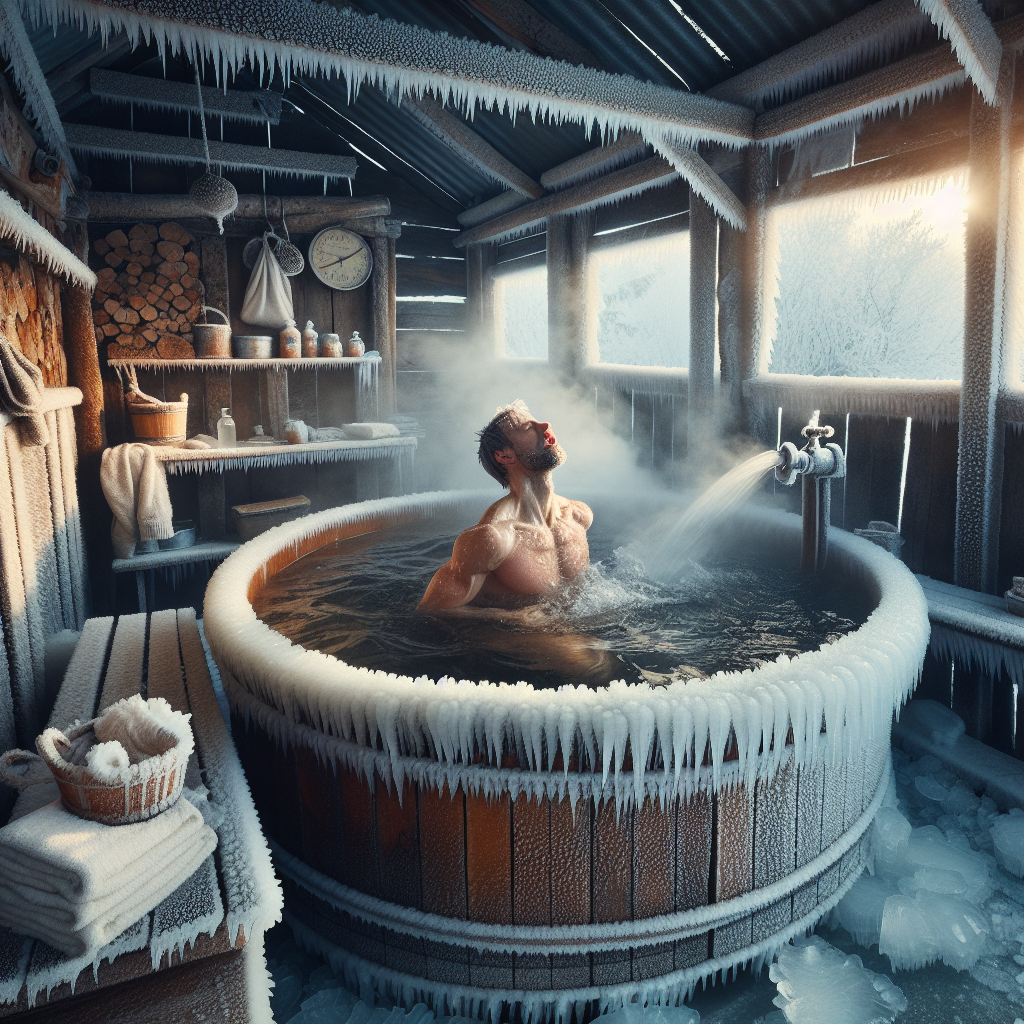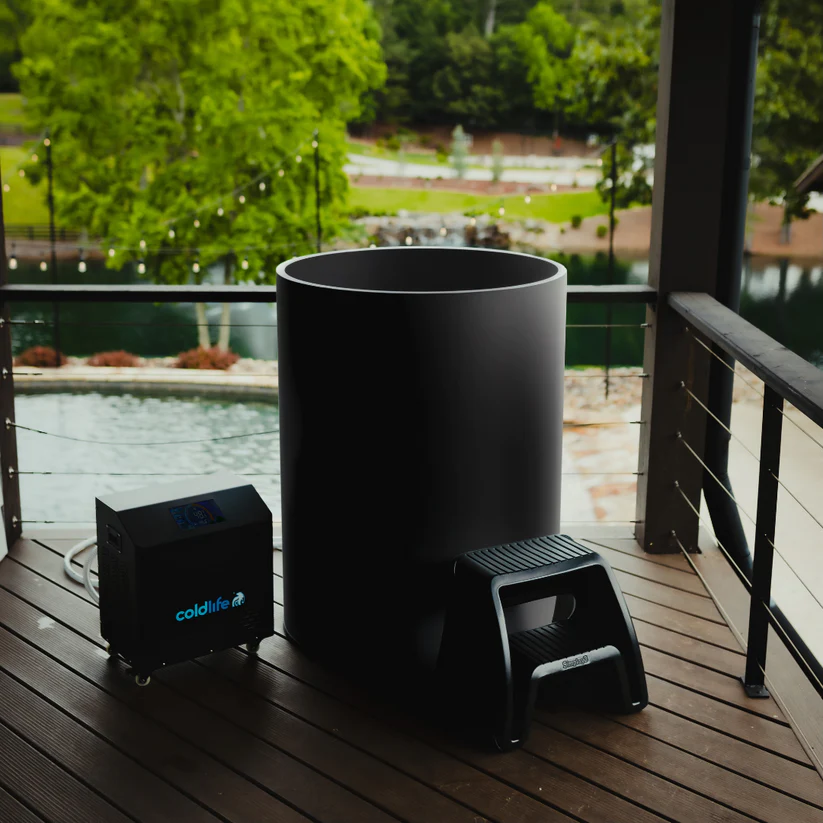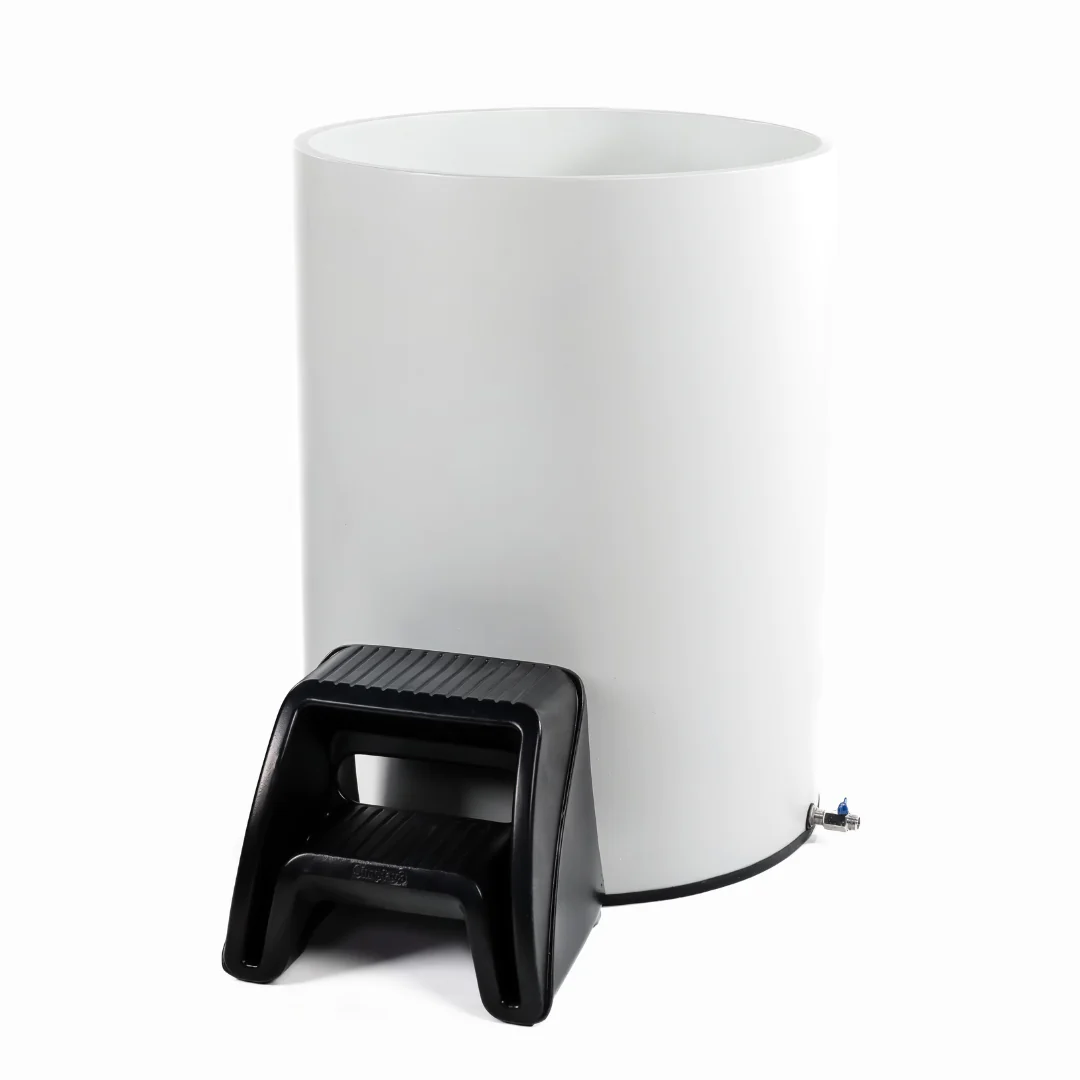Key Takeaways – What is a good cold plunge temperature
Takeaway 1:
Finding the right temperature for your cold plunge is absolutely essential if you want to reap all the awesome benefits it offers. According to research, the sweet spot is between 10-15 degrees Celsius or 50-60 degrees Fahrenheit. This temperature range is like a magic potion for your body, helping to reduce muscle inflammation and promote healing. So, don’t just jump into any random water; make sure it’s in this therapeutic range to maximize the goodness!Takeaway 2:
If you’re new to cold plunging, it’s totally okay to start at a higher temperature and gradually work your way down. You could begin with around 60°F (15°C) and let your body adjust before taking on colder temperatures. Remember, we’re all different and have varying comfort levels, so listen to what feels right for you. Just don’t go below freezing point or exceed the recommended maximum of 60°F – that’s when things can either get dangerous or not give you the desired effects.Takeaway 3:
It’s worth noting that some sources suggest going for a colder immersion around 50°F (10°C) can be even more effective in reducing inflammation compared to warmer plunges. However, it’s not set in stone – personal preference plays a role here too! Ultimately, finding your optimal cold plunge temperature may require a bit of experimentation. Maybe try different ranges within that magical zone of 50-60°F (10-15°C) until you discover what feels just right for you. Trust your instincts and enjoy the invigorating experience while reaping those incredible health benefits!Our #1 Best Recommended Cold Plunge
1. Discover the benefits of cold therapy on our The Cold Life page. 2. Learn more about this unique wellness method by exploring The Cold Life section of our website. 3. For more insights into harnessing the power of cold for your health, visit The Cold Life.Are you ready to redefine your limits with cold immersion?
Explore the compelling truth behind cold plunging and its remarkable benefits for mind and body.
Dive into the Cold Life Plunge Bundle now to embark on your journey to revitalization and strength. Transform your life today!
Here’s a Youtube Video about What is a good cold plunge temperature
What is a good cold plunge temperature? This question is pertinent for those who want to reap the therapeutic benefits of cold plunges. The ideal cold plunge temperature range is between 50 to 59 degrees Fahrenheit (10-15 degrees Celsius).
This range has been found effective in stimulating circulation, boosting immunity and enhancing recovery from strenuous activities. However, it’s crucial for beginners to start at the higher end of this spectrum and gradually acclimate their bodies to lower temperatures. Equally important is understanding your personal comfort and tolerance levels in order not to push your body into potential risks such as hypothermia. Ultimately, whether you’re aiming for warmer or colder immersion, maintaining a safe and effective temperature will optimize its anti-inflammatory benefits.

Understanding the Ideal Cold Plunge Temperature Range
By the way, when it comes to cold plunge pool temperatures, precision is key. You see, research points to an optimal cold plunge temperature range between 10-15 degrees Celsius or 50-60 degrees Fahrenheit. This isn’t merely a suggestion, but where the magic of cold therapy benefits truly unfolds. Each degree counts – too high, and you’re missing out on potential gains; too low could put your health at risk.

Download this courtesy guide to optimize your sauna and cold plunge experience and health optimization.
Download the Free Guide TodayExploring the Therapeutic Benefits of the Ideal Cold Plunge Temperatures
In any case, let’s delve into why this specific temperature range is so effective. These are not just typical ice bath temperatures we’re talking about – they have a purpose. At these levels of chilliness, water becomes therapeutic and promotes various health benefits such as reducing muscle inflammation and triggering healing properties. Whether your goal is thermal stress recovery or other physiological effects of cold plunge – it all starts with maintaining a cold plunge pool.
Getting Started: Tips for Cold Plunging Beginners
Now that I think about it, if you are new to this whole cold plunging saga, don’t worry! Start with temperatures around 60°F (15°C) which falls within our safe cold water immersion temperature range – a gentler introduction maybe? And remember: consistency over intensity! So gradually work your way down as your body gets used to it.
Personal Comfort and Tolerance Levels in Cold Plunging
All things considered, the temperature you choose can also be influenced by personal comfort and tolerance, because after all – one’s optimal cold plunge temperature might not be the same for another. Just ensure it doesn’t drop below freezing point or above 60°F – safety first!
Potential Risks of Deviating from Recommended Temperatures in Cold Plunging
When it comes to cold water therapy guidelines, it’s essential to know your limits. Going lower than freezing point may cause harm and straying above the recommended maximum could fail to provide the desired effects.
Comparing the Effectiveness of Warmer and Colder Immersion in Reducing Inflammation
You see, there are conversations about colder immersions being more effective, particularly around 50°F (10°C), at reducing inflammation compared to warmer ones. It’s crucial to find what works best for your body while adhering to general guidelines.

When exploring the world of cold plunges, knowing the right temperature is key for a safe and effective experience. Just like determining how long your cold plunge should last, the right temperature can significantly impact how your body responds. Naturally, there will be questions like, “When is a cold plunge too cold?”. It’s also essential to understand how extreme temperatures, such as those in a polar plunge, affect our bodies differently from standard cold plunges. For instance, taking into consideration pre-existing conditions or positions such as being pregnant come into play when deciding if such practices are beneficial or safe – something you may learn more about in “Are Cold Plunges Safe During Pregnancy?” In addition to understanding what happens to your body during a cold plunge, it’s equally important to know how transitioning from different temperatures affects you. For instance, going from a sauna directly into a plunge can produce different results than just doing one separately – explore more about this in our post on “What Happens When You Go From Sauna To Cold Plunge“. So whether you’re new to this wellness trend or already familiar with the practice of taking an icy dip, educating yourself on these aspects will ensure each cold plunge is a beneficial and safe experience. Be sure to read “What Is Good About Cold Plunge” to learn more about the benefits of this practice.
My Personal Take about What is a good cold plunge temperature
Hey there, friend! I’m George, your go-to guy when it comes to unraveling the secrets of saunas and cold plunges.
You’ve probably found yourself wondering, “what is a good cold plunge temperature?“, right? Well, let me tell you, finding the ideal conditions for an invigorating dip isn’t as complicated as it seems!
In any case, allow me to put those worries to rest. Setting up the perfect sauna or making that cold plunge doesn’t need to be an uphill task.
The perfect cold plunge temperature lies somewhere between 50-59°F (10-15°C). That’s just enough to give you that revitalizing kick without being overwhelming!
Words of advice: always remember that every individual’s preference can differ slightly; what matters most is finding what works best for you in achieving rejuvenation and relaxation.
You see, when done right, saunas and cold plunges are nothing short of exhilarating; they’re like a paradise right in your backyard!
I hope my insights have sparked an interest in you and remember –
achieving optimum wellness is within reach. So why not take this opportunity to embark on the transcending journey of sauna and cold plunge therapy? Trust me; it’s a decision you won’t regret.
Our #1 Best Recommended Cold Plunge for most People
A cold plunge, also known as cold water immersion, is an exhilarating experience that has numerous health benefits. The ideal cold plunge temperature can vary based on personal comfort and goals, but it’s generally accepted that anything below 15°C (59°F) qualifies as a ‘cold’ dip. For a deeper understanding of the right conditions for you, check out our guide on The Cold Life.Discover the unparalleled benefits of cold immersion with ColdLife Plunge 1. Unleash your full potential with our innovative cold plunging solution. Explore the transformative effects on your body and mind. Elevate your lifestyle with ColdLife Plunge 1 today!
Frequently Asked Questions about What is a good cold plunge temperature
1. What is considered the ideal temperature for a cold plunge?
The ideal temperature range for a cold plunge is between 10-15 degrees Celsius or 50-60 degrees Fahrenheit.
2. Can I start with higher temperatures if I’m new to cold plunging?
If you’re new to cold plunging, you can start with temperatures around 60°F (15°C) and gradually work your way down as your body gets used to it.
3. Is there a maximum temperature limit for a cold plunge?
Avoid going above the recommended maximum of 60°F (15°C) as it may not provide the desired effects or potential health benefits.
4. Can colder water be more effective in reducing inflammation?
Some sources suggest that a colder immersion at around 50°F (10°C) may be more effective than warmer ones in reducing inflammation.
5. What happens if the water temperature goes below freezing point?
If the water temperature goes below freezing point, it can cause harm and should be avoided during a cold plunge.
6. Can I adjust the temperature based on my personal comfort level?
Absolutely! The optimal temperature for a cold plunge can vary slightly depending on individual preference and comfort levels, as long as it falls within the range of 50-60 degrees Fahrenheit or 10-15 degrees Celsius.
Now you know What is a good cold plunge temperature , but that’s only the beginning of your journey here at Sweat N Chill Zone. If you found this post useful there’s more to learn to get you to the next step of your sauna & cold plunge journey. If you read our next articles you’ll be a step further than most people.
Before you go…
Takeaway 1:
Finding the right temperature for your cold plunge is absolutely essential if you want to reap all the awesome benefits it offers. According to research, the sweet spot is between 10-15 degrees Celsius or 50-60 degrees Fahrenheit. This temperature range is like a magic potion for your body, helping to reduce muscle inflammation and promote healing. So, don’t just jump into any random water; make sure it’s in this therapeutic range to maximize the goodness!Takeaway 2:
If you’re new to cold plunging, it’s totally okay to start at a higher temperature and gradually work your way down. You could begin with around 60°F (15°C) and let your body adjust before taking on colder temperatures. Remember, we’re all different and have varying comfort levels, so listen to what feels right for you. Just don’t go below freezing point or exceed the recommended maximum of 60°F – that’s when things can either get dangerous or not give you the desired effects.Takeaway 3:
It’s worth noting that some sources suggest going for a colder immersion around 50°F (10°C) can be even more effective in reducing inflammation compared to warmer plunges. However, it’s not set in stone – personal preference plays a role here too! Ultimately, finding your optimal cold plunge temperature may require a bit of experimentation. Maybe try different ranges within that magical zone of 50-60°F (10-15°C) until you discover what feels just right for you. Trust your instincts and enjoy the invigorating experience while reaping those incredible health benefits! Are you wondering how cold is too cold for cold water plunge? Learn about the benefits of taking a cold plunge and find out the best way to do a cold plunge. If you’re considering investing in one, check out our guide on the best and most affordable cold plunges available.George From Sweat N Chill Zone
George, the passionate founder of Sweat N Chill Zone, is an ardent advocate for holistic wellness through the healing powers of saunas and cold plunges. With a background in health sciences and a fervent dedication to sharing the benefits of thermal therapy, George curates an informative space, offering insights, tips, and expert advice to help individuals optimize their health and well-being through the transformative effects of heat and cold treatments. Through Sweat N Chill Zone, George aims to inspire and educate, fostering a community centered around rejuvenation and vitality.
Download this courtesy guide to optimize your sauna and cold plunge experience and health optimization.
Download the Free Guide Today

